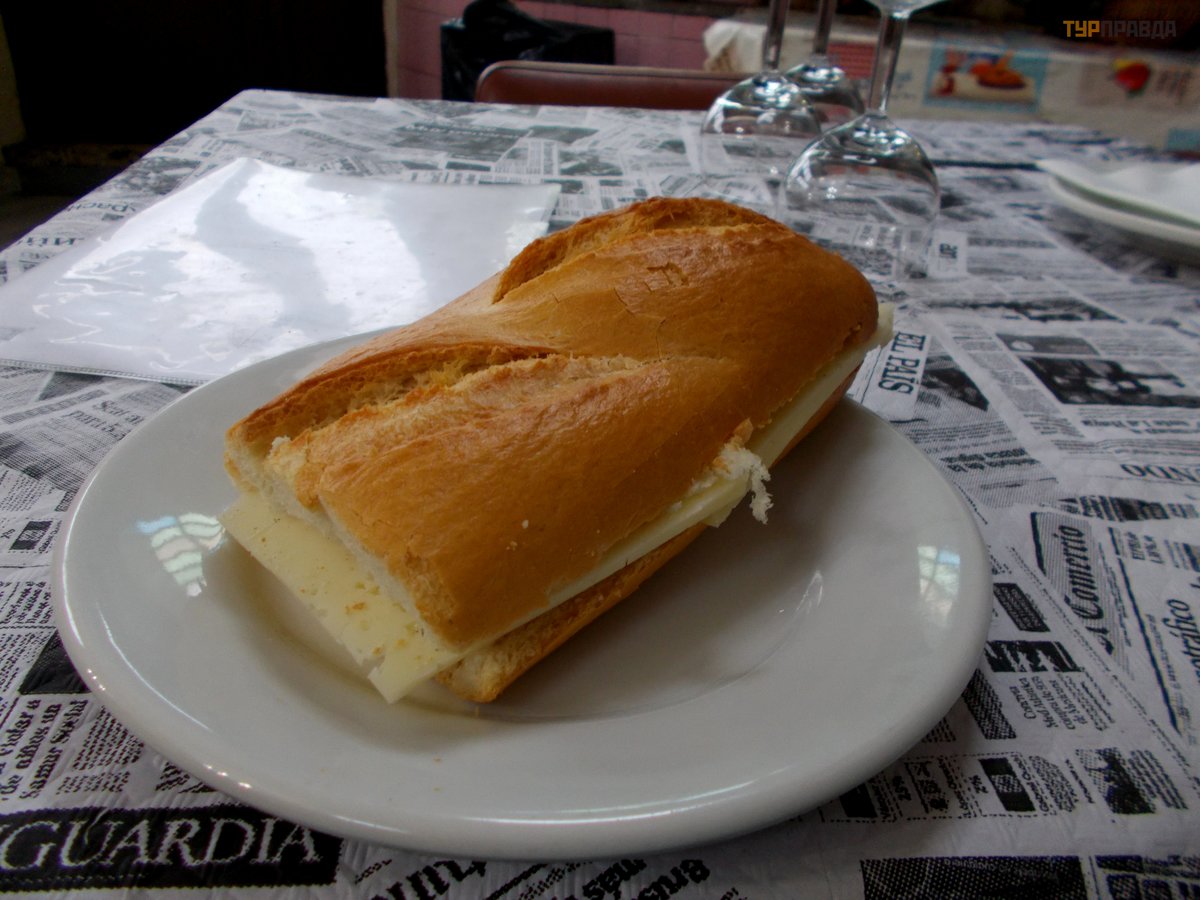To Altamira and beyond. Pilgrimage to the caves of Cantabria. Part 3. Puente Viesgo. more
To Altamira and beyond. Pilgrimage to the caves of Cantabria. Part 3. Puente Viesgo. Caves of La Castillo and Las Manedas. Conclusion
The final and most important part of my pilgrimage is devoted to the caves, which are located near the village of Puente Viesgo. From Santander to Puente Viesgo, buses run even more often than to Santillana del Mar. This is probably due to the fact that Puente Viesgo lies on the way to some big city. You can ask for a bus schedule at the information desk of the bus station. You will be given such a small leaf, as in the photo.
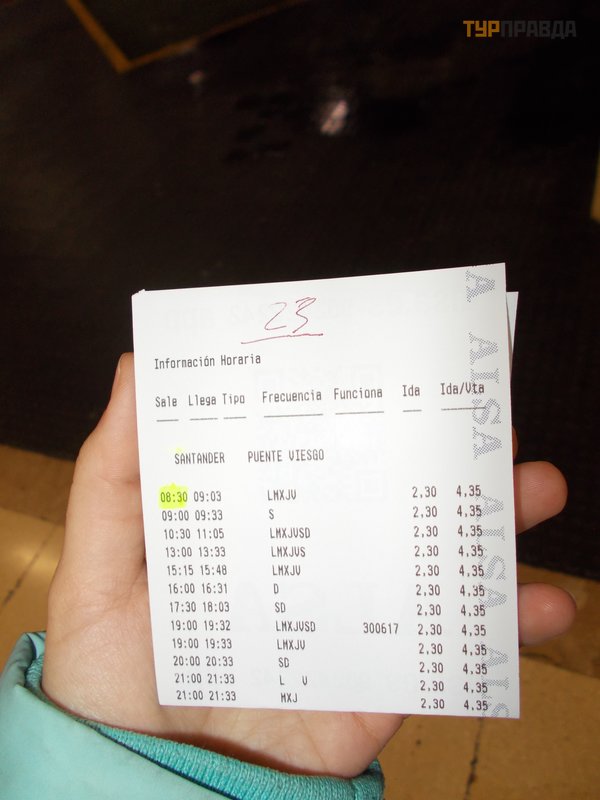 Bus schedule from Santander to Puente Viesgo.
Bus schedule from Santander to Puente Viesgo.
Upon arrival in the village, I advise you to immediately find out where the stop is in the opposite direction.
On the way to the caves, I came across a single signpost.
 The only sign on the way to the caves
The only sign on the way to the caves
And even though there is only one road going uphill, some doubts still arise, and there is no one to ask for directions. This mountain in the photo taken near the bus stop in Puente Viesgo is the final goal of the path ->>
 A mountain with caves. In the lower right corner of the photo - the same pointer
A mountain with caves. In the lower right corner of the photo - the same pointer
If in Santillana del Mar a pavement was carefully laid along the road to Altamira, then the caves of La Castillo and Las Manedas had to be reached by road. The road zigzags, so you need to be careful when turning or when crossing to the other side.
On the right side of the road in the asphalt there is a depressed footprint of someone's foot.
 Sign on the way to La Castillo cave
Sign on the way to La Castillo cave
I thought it was a sign and I was on the right track.
From above, the wonderful landscapes of Cantabria open up, which amaze with a variety of shades of green.
And the grass itself is a color that I have never seen before. For some reason, the lines from Gumilyov came to mind: "Only the greenery became a little ominous, / As if vitriol was spilled. " And although I didn’t come across roses on the way, in some places the green color really casts blue. I couldn't capture it in a photo.
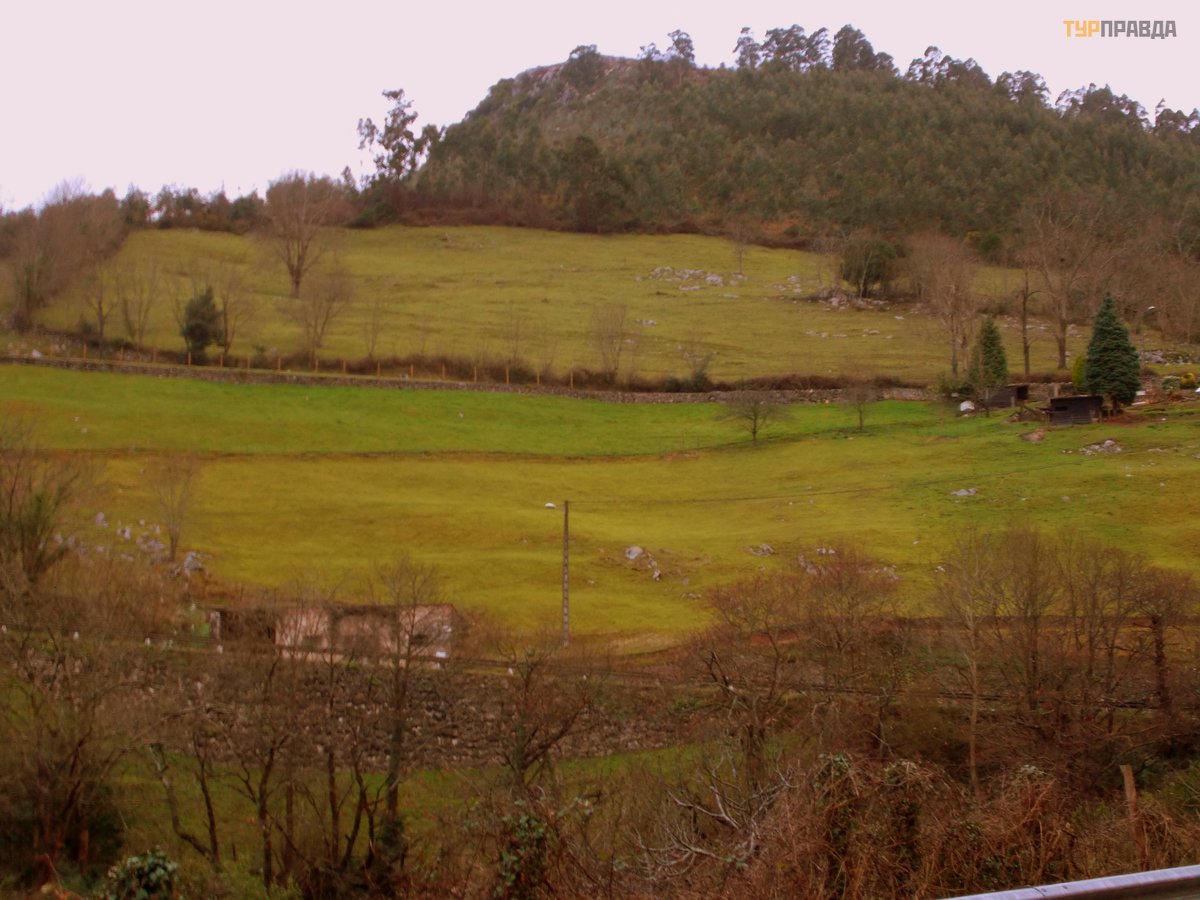 In this photo I counted 7 shades of green
In this photo I counted 7 shades of green
And there are coniferous trees growing there with such fruits ->>
Maybe biologists will find out what it is?
A ten-minute walk to the cave of La Castillo, the mountain of the same name reappeared because of the turn.
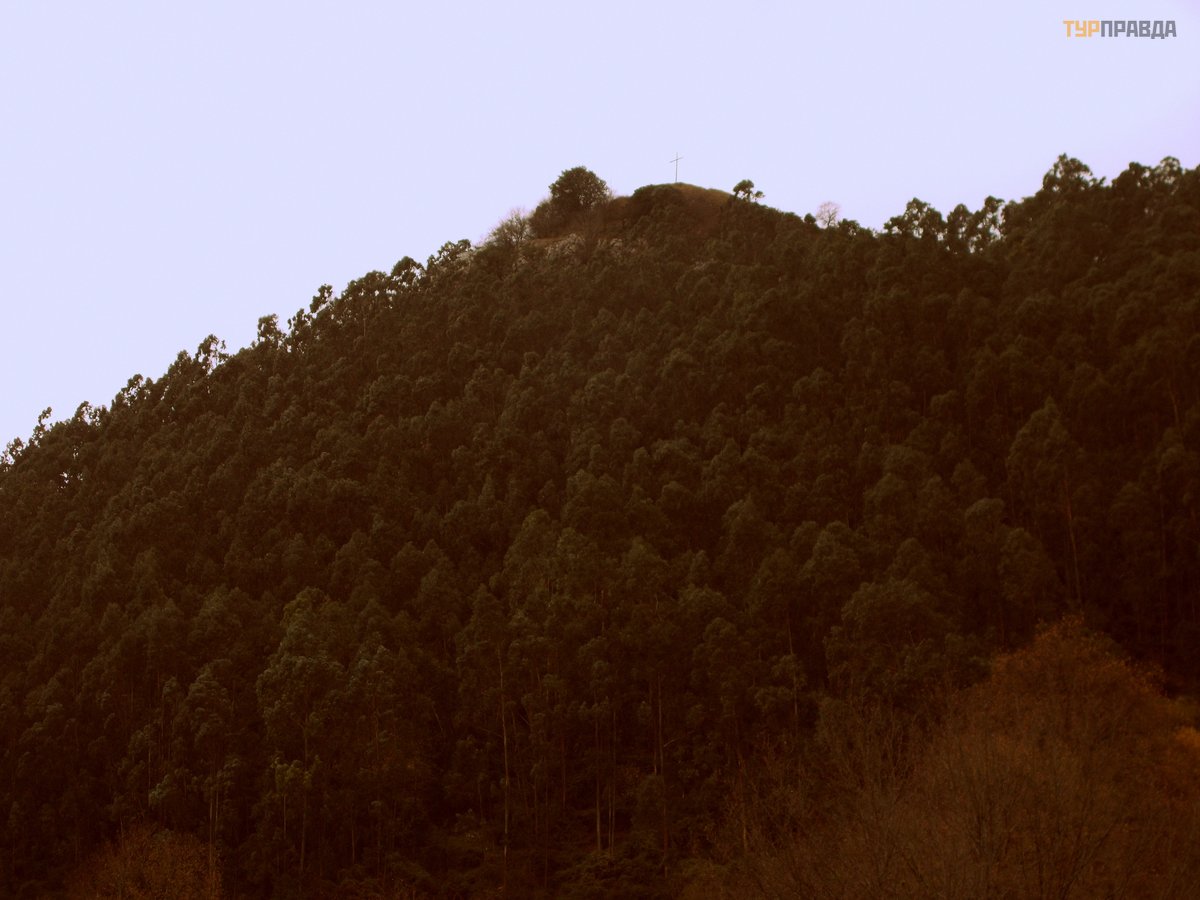 the mountain in which the La Castillo cave is located
the mountain in which the La Castillo cave is located
There is still a second pointer,
but it is located almost at the very entrance to the museum (cars in the background are in the parking lot in front of the museum - see photo below)
It takes only 25-30 minutes to climb La Castillo mountain.
As you can see in this photo, there are four caves in La Castillo mountain and all of them are within walking distance. But, unfortunately, two of them are now closed to the public. With what that is connected, I do not know. But to be honest, I was not very upset, because my goal was the cave of La Castillo - it is in it that some of the most ancient rock paintings in the world are located.
On the day I visited these places, it was raining heavily, and then hail began to fall. There were no visitors in the museum except me. At the entrance, I was offered to buy two tickets at once: one - to the cave of La Castillo, the other - to the cave of Las Manedas. I did not agree to this and I do not advise you,
because the tickets indicate the visit time with a calculation of 25 minutes for each cave. At the time indicated on the ticket, a museum worker approaches the cave and opens it. You cannot walk through the caves on your own. Take pictures of drawings too. Touching them, of course, is also strictly prohibited. But these are real drawings, not copies, as in Altamira!
It took me more than an hour to inspect the cave of La Castillo - and this despite the fact that because of the rain the floor in some parts of the cave was flooded with water and therefore it was impossible to get there. I was accompanied by a very nice woman historian who also spoke very fluent English. It was stupid not to take advantage of such a chance, so I pestered her with questions and, I must admit, I learned a lot. No one accompanies visitors in the Altamira Museum, the guide's help is limited to giving visitors a plan of the museum and a minute story about its history.
But when you visit the caves of Mount La Castillo, you will have the chance to interact with archaeologists and historians. I was shown excavations, the lowest cultural layer of which belongs to the early Paleolithic. In one cave of La Castillo, you can study the entire history of the development of ancient culture.
The drawings in the cave of La Castillo are one of the oldest rock paintings known today. The images of the hands in the negative date back to 40.000 years. To create drawings, ancient people used ocher, a paint extracted from minerals. To get red paint, the powder was burned on fire. If this is not done, it will be yellow. The powder was mixed with water, taken into the mouth and, using a hollow stick, sprayed onto the hand attached to the wall and around it so that an unpainted imprint remained on the wall. Images made in such a shade are called negative. There are dozens of such prints in the cave.
In addition to images of hands, the most ancient drawings include circles (discs), which presumably and not unreasonably associate with solar or lunar symbols. In my opinion, there are 119 such disks in the La Castillo cave (I don’t remember the exact number), some of which are painted, and some are sprayed. On one wall, the disks are drawn in two rows. Lines resembling rays depart from one disk, and at the same time both of these lines are directed to the right, that is, most likely, drawn with the right hand. Directly below this board is an undeciphered sign of two lines: the lower one is drawn from left to right, and the upper one, possibly from right to left. This sign vaguely resembles a cross. It is known that the disk was drawn earlier. According to one theory, the disk images represent an ancient calendar. At a distance of several meters from these drawings is an image of a cross: two lines crossed diagonally (not perpendicularly).
This image of a cross was created about 40.000 years ago.
All the handprints in the La Castillo cave are left hand prints, and all are in the negative. But in other caves there are positive images of right hands (the hand was dipped in paint and touched the wall).
So, the oldest rock paintings include symbols (among which there is a cross) and handprints. Images of animals appeared tens of thousands of years later. The oldest animal drawings in La Castillo Cave (bison, horses and possibly sheep) date back 25.000 years. I remember one bison, depicted vertically with his head down. Presumably, he drinks water: under the drawing, a crack runs along the wall, which may have been associated with the river.
20.000 years have passed since the creation of the earliest drawings to the time of the appearance of the latest! Thousands of generations lived in this cave and each new generation applied their images side by side and only sometimes on top,
images that were created by their ancestors.
The cave of Las Manedas must be visited because it is very beautiful. She is simply unrealistically beautiful! She is just fabulous! But it has been a home for thousands of years. This cave was created by a waterfall formed from a river that once flowed in these places a long time ago. Now the water level is approximately at the level of Puente Viesgo village.
The drawings in Las Manedas are made in black, which means they are from the era of the Magdalenian culture. Their exact age according to the results of radiocarbon analysis is 12.000 years. Impressive is one drawing made on a stone hanging above the ground at a level of no more than a meter. In the ground under this stone there is a depression filled with water, which probably served for rituals. If you look at the reflection in the water, you can see a horse. But to see this horse on the stone, you need to tilt your head a lot.
The results of my short pilgrimage can be described in several theses. If you are not interested in my reflections on Paleolithic culture, go to the landscape photos below.
1. As a rule, cavemen did not live in the place where they painted. Therefore, perhaps, the rooms with images were used for rituals.
2. The most ancient rock paintings include images of hands and signs, some of which cannot be unambiguously interpreted at present.
3. The cross is indeed the oldest sign of humanity. In the cave of La Castillo there is a cross painted 40.000 years ago.
4. Animal drawings appeared in the late Paleolithic era. The oldest images are 25.000 years old.
5. Ocher was used for the most ancient rock carvings. At the same time, already 40.000 years ago, powder was burned to obtain red paint.
6. If in the rock art of an animal species the line is reben (the line
separating the skeleton from the abdomen), then the age of such a pattern is 14-12 thousand years.
7. Mostly, both bison and horses were used not for food, but for clothing and making lamps.
8. To create many of the drawings, the natural form of the stone was used. This gave the images more realism. At the same time, the stone came to life. The animal turned out to be inscribed in the wall, and the stone took on life in the drawing. "Lace, stone, be, / And become a cobweb. "
9. Our ancestors, who lived 40.000 years ago, and those who lived 20.000 years ago, knew much more about each other than we know about them - people of the 21st century, who flew into space and connected the world with an invisible web of radio signals, who learned how to build tall houses and construct machines capable of transporting us through the earth, through the air and through the water, we know surprisingly little about the life, intelligence and language of our own ancestors.
By noon, the sun came out over Mount La Castillo,
but in the distance it was still raining in the mountains. Thanks to this holiday of nature, I managed, it seems, to take some successful photos ->>
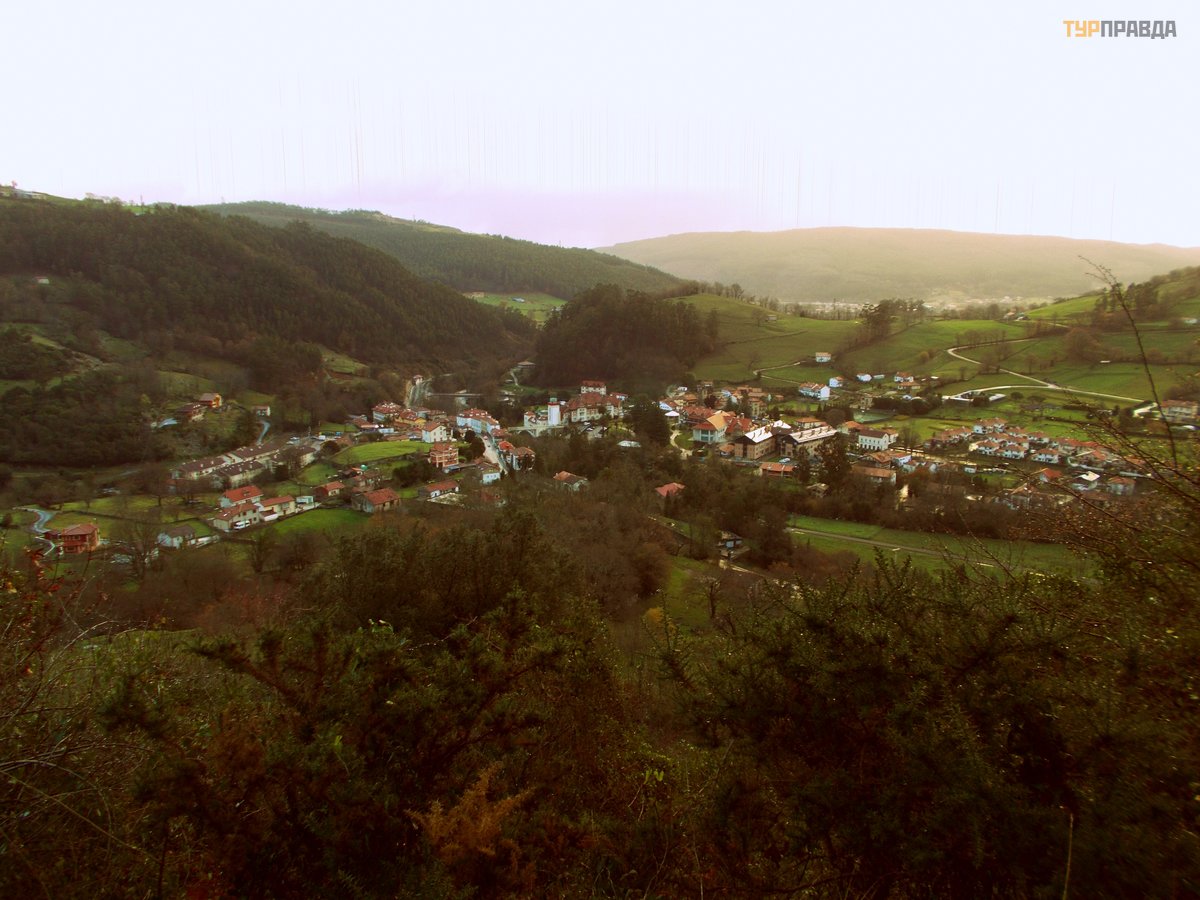 Landscapes of Cantabria. View from La Castillo
Landscapes of Cantabria. View from La Castillo
 Landscapes of Cantabria. View from La Castillo
Landscapes of Cantabria. View from La Castillo
 Landscapes of Cantabria. View from La Castillo
Landscapes of Cantabria. View from La Castillo
 Landscapes of Cantabria. View from La Castillo
Landscapes of Cantabria. View from La Castillo
It was still almost an hour before the bus, and the jacket and jeans were very wet, so I simply had no choice and I went to a small cafe in Puente Viesgo - the Tabacos cafe-bar. The interior and atmosphere of this establishment is very reminiscent of a Soviet canteen.
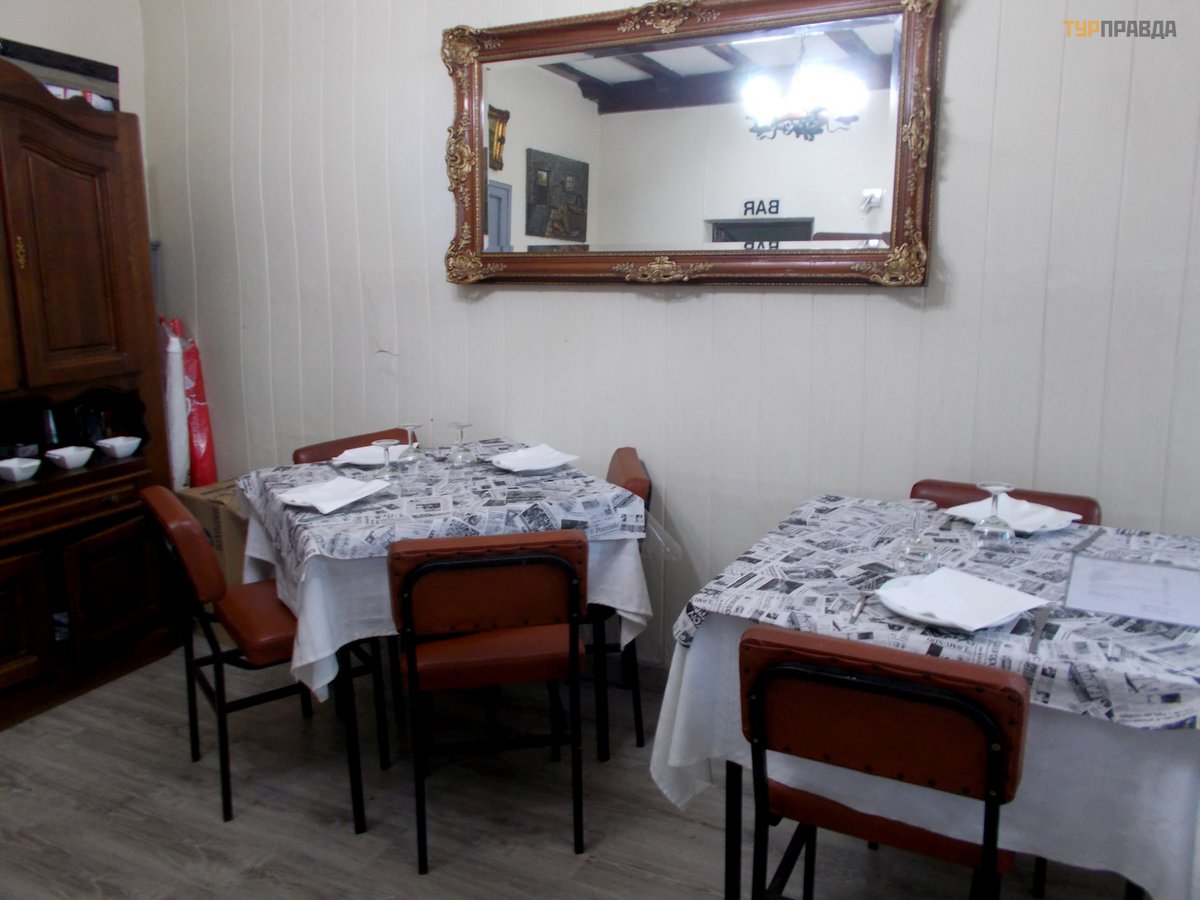 Tabasco cafe bar in Puente Viesgo
Tabasco cafe bar in Puente Viesgo
And wall pictures too =)
And again - I was pleasantly pleased with the size of the dish. But I only asked for cheese
And finally, a photo of the chef who kindly agreed to pose for me
 The chef at the Tabasco cafe in Puente Viesgo
The chef at the Tabasco cafe in Puente Viesgo
I fell in love with Cantabria! In its ancient heritage, beautiful nature and sincere people. And I hope that I will definitely go back there. After all, I didn’t have time to see everything!





